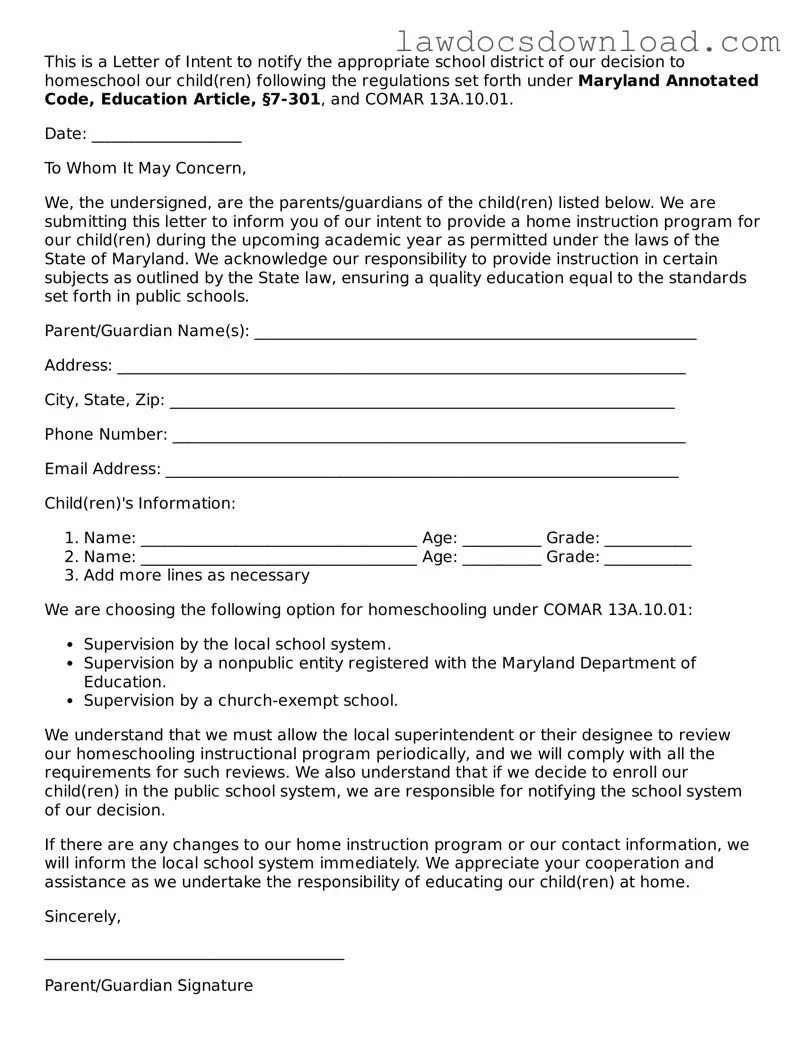This is a Letter of Intent to notify the appropriate school district of our decision to homeschool our child(ren) following the regulations set forth under Maryland Annotated Code, Education Article, §7-301, and COMAR 13A.10.01.
Date: ___________________
To Whom It May Concern,
We, the undersigned, are the parents/guardians of the child(ren) listed below. We are submitting this letter to inform you of our intent to provide a home instruction program for our child(ren) during the upcoming academic year as permitted under the laws of the State of Maryland. We acknowledge our responsibility to provide instruction in certain subjects as outlined by the State law, ensuring a quality education equal to the standards set forth in public schools.
Parent/Guardian Name(s): ________________________________________________________
Address: ________________________________________________________________________
City, State, Zip: ________________________________________________________________
Phone Number: _________________________________________________________________
Email Address: _________________________________________________________________
Child(ren)'s Information:
- Name: ___________________________________ Age: __________ Grade: ___________
- Name: ___________________________________ Age: __________ Grade: ___________
- Add more lines as necessary
We are choosing the following option for homeschooling under COMAR 13A.10.01:
- Supervision by the local school system.
- Supervision by a nonpublic entity registered with the Maryland Department of Education.
- Supervision by a church-exempt school.
We understand that we must allow the local superintendent or their designee to review our homeschooling instructional program periodically, and we will comply with all the requirements for such reviews. We also understand that if we decide to enroll our child(ren) in the public school system, we are responsible for notifying the school system of our decision.
If there are any changes to our home instruction program or our contact information, we will inform the local school system immediately. We appreciate your cooperation and assistance as we undertake the responsibility of educating our child(ren) at home.
Sincerely,
______________________________________
Parent/Guardian Signature
______________________________________
Parent/Guardian Signature
Date: ___________________
